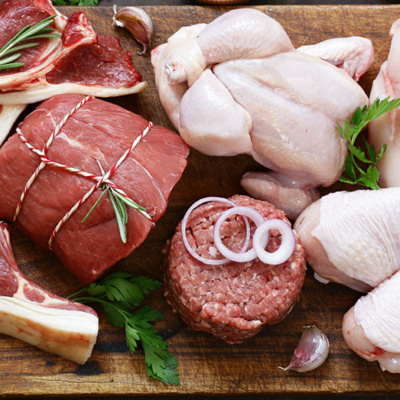top of mind news
- Independent Operators Demand Government Action To Keep Their Business Alive
- Chefs Forced To Reinvent Amid Restaurant Shutdown
- Food Safety in the Corona Era
- States Ease Liquor Laws To Help Restaurants
- MRM Research Roundup: Coronavirus Stats and More
- States Are Mandating Restaurant Closures. Here’s 3 Ways Brands Can Prepare.
Poultry
For the week ending March 7th, chicken slaughter was up 6.2% from the year prior, leaving ready-to-cook (RTC) production up 6.4% from a year ago. The six-week total of RTC broiler output is up 7.9% (y/y), but the larger production has been not as influential on pushing wholesale prices down. Amid ongoing COVID-19 issues, breast meat prices are rising and have notched abrupt gains from their previously record low pricing. While higher chicken breast meat prices can persist, the wing markets may falter amid a near full shutdown of foodservice outlets. Egg prices have recently skyrocketed also, and further upside potential is likely as consumers stock up on at-home needs.
Beef
Despite declining from the week prior, beef production remains robust, with last week’s output coming in 7.6% over a year ago. Still, what was once an abundance of beef pressuring the cutouts, turned to robust retail interest that boosted the USDA cutout values to a record single-day rise. While further upside potential may exist, price increases will likely begin to wane as many restaurant and foodservice operations remain closed in the U.S. Active wholesale interest is expected to cover some of the lost foodservice demand, but when foodservice buying eventually returns, a resurgence of beef price rises may be seen.
Pork
Pork production last week was down 1.3% from the previous week but was 8.6% better than the same week in 2019. As retail buying interest stepped in to cover their immediate increased needs, the USDA pork cutout found support. Most all pork items from the carcass have risen except for the ham primal. Like the beef markets, anticipate appreciating prices due to aggressive retail buying but in the near term only. On a side note, there remains no indication that U.S. pork exports are at risk, but if the current coronavirus problem persists, that could change.
THE SEA
Seafood
The snow crab markets remain expensive. U.S. imports of snow crabs during January were down 20% from the previous year. However, snow crab demand is expected to be shortened considerably in the coming weeks due to restaurant operation restrictions throughout the U.S. This could bring some short-term relief to snow crab prices. However, once the restaurant industry resumes full operations, snow crab demand is expected to escalate. The snow crab markets are likely to be erratic during the spring.
THE GARDEN
Produce
The vegetable markets, including lettuce, have mostly firmed during the last week as adverse weather this month is slowing output in the West. U.S. iceberg lettuce shipments last week declined 19.4% from the previous week and were 24.4% less than the same week last year. Although supplies could remain short in the near term, restaurant closures are likely to curb demand extensively for at least the rest of this month. Thus, the greater price risk in the lettuce markets is likely to the downside. Potato prices could see weakness as well once the consumer stockpiling begins to subside.
THE KITCHEN SINK
Dairy
Butter prices are the lowest for this time of year since 2015. Global butter prices are now either equal to or lower than U.S. prices which may improve exports. If spot butter prices violate the recently set 59-month low of $1.695, then “some” long-term buying could be considered. The cheese block market has moved upward recently. However, CME cheese futures for Q3 and Q4 fell roughly $.25 in recent trading days. Growing class III milk price premiums over class IV milk encourages cheese output. This factor and fading nonfat dry milk prices should temper further cheese block price gains or move them lower.
Grains
The grain markets have mostly declined during the last week including corn. Export expectations for feed are declining due to the challenged world economy. Further, ethanol plant margins are struggling due to the lower gasoline prices. Thus, corn use is expected to dampen in the near term. Corn could still move lower.
Oil
Nearby diesel fuel futures this week are the lowest in 50-months. The spread of coronavirus has brought travel to basically a halt. Until the coronavirus problem begins to improve, its likely that diesel fuel and gasoline prices remain weak.













